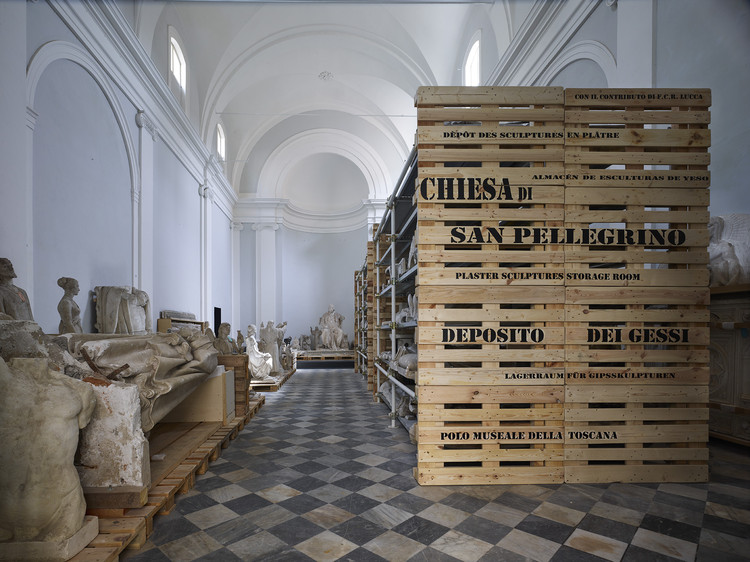
-
Architects: MICROSCAPE architecture urban design AA
- Area: 250 m²
- Year: 2016
-
Photographs:Pietro Savorelli
-
Manufacturers: Artemide, Epal, Marcegaglia, Zumtobel

Text description provided by the architects. The Church of San Pellegrino in the historic center of Lucca takes its name from its location which is on Via San Pellegrino, now called Via Galli Tassi.It is believed that it was built at the ancient San Giorgio doorway, that is, the access door to ancient Roman forts. Expanded in the middle of the seventeenth century with the great vaulted hall, it became a pilgrimage and prayer center for wealthy local families. In 1808 the Church of San Pellegrino was closed for worship. In the twentieth century, it was an organ workshop where city church organs were manufactured and repaired, it then became a warehouse.







































